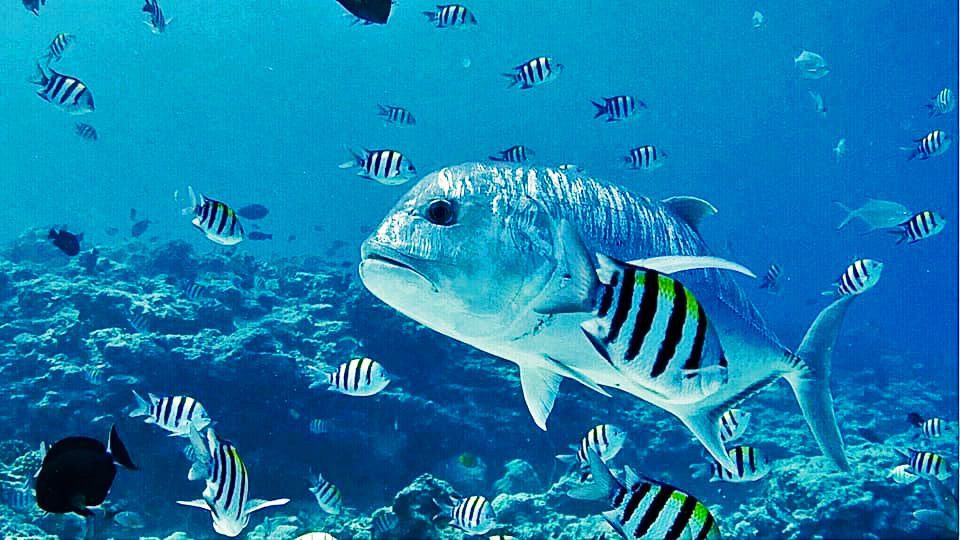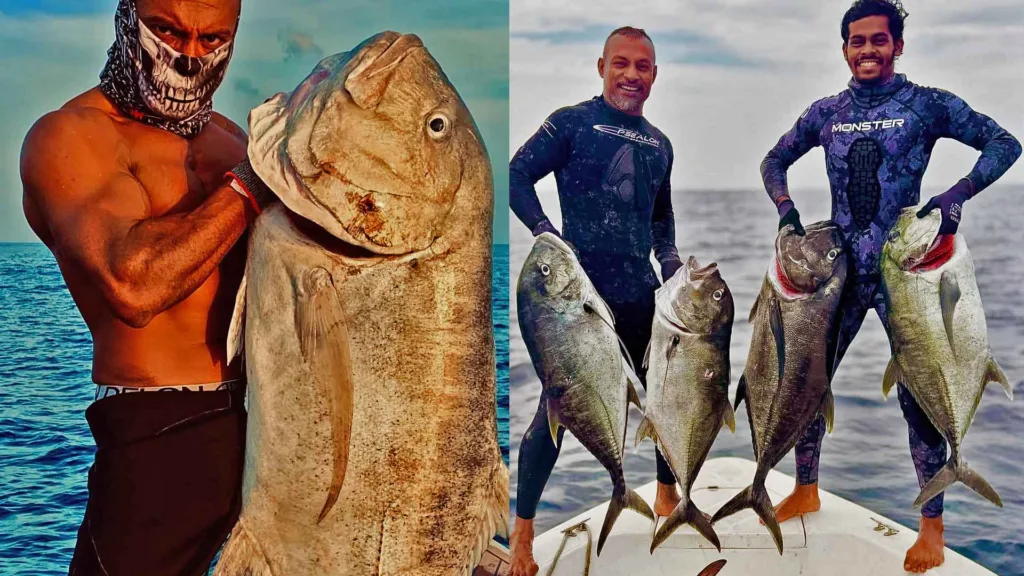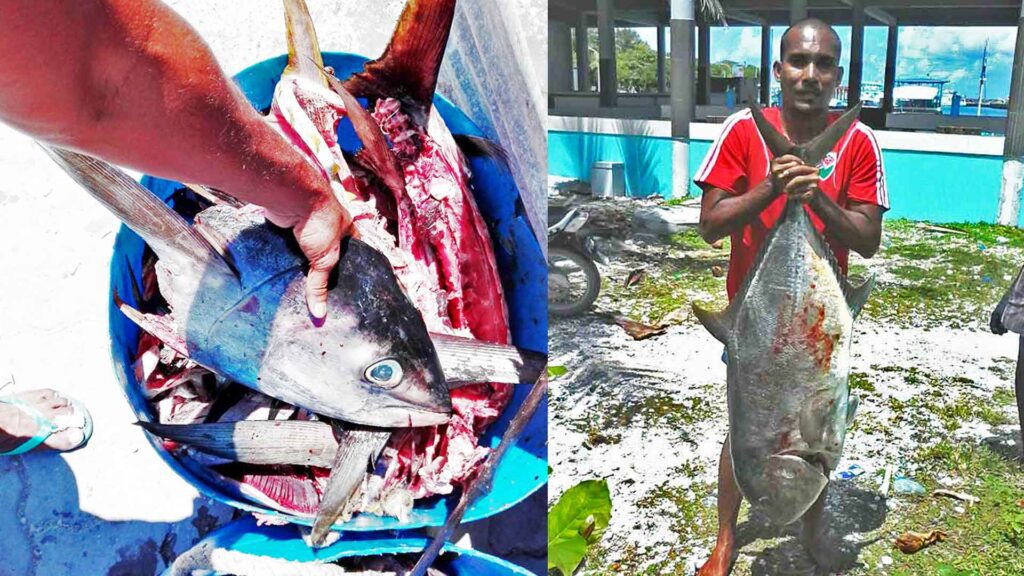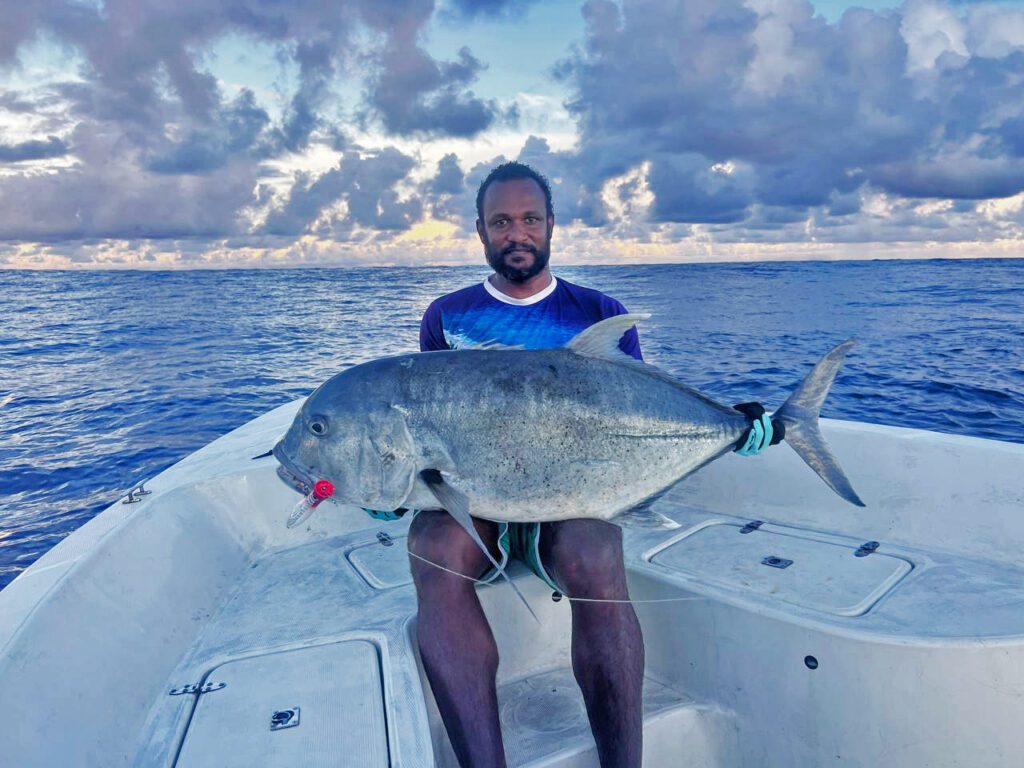
Tides are a natural phenomenon that influence fishing activity. It contributes nutrients, attracting and gathering both small and large fish.
Fishermen on our island of Fuvahmulah, especially those who know a lot about the Giant trevally (mudahandhi), say that the fishing pressure on these species is affected by the tides. This is a fact that we have repeatedly tested and experienced.
For example, during low tide, we used to deploy tuna heads and other baits on shallow reef flats to catch giant trevally. During high tide, they rise from the drop-offs and roam the reef flats.
During high tide, waves pound actively at the reef crest, producing white foam known as fenagando. This provides cover for predators such as giant trevally to dash into small fish found on the reef front and reef flat.
GTs swim around lagoons and reef flats at high tide in search of prey, as small fish concentrations are found in reef channels, edges, and various reef pathways. When the high tide is over, giant trevallies search for food along the shoreline or near the drop-off, where small fish are present to some extent.

Giant trevallies are some of the ocean’s most active and fast-moving fish. They enjoy water disturbances, effects, surface activity, and wave breaks. Because of their physical characteristics, they also move against the flow of water in many places.
The water disturbance also creates cover or reduces the visibility of the water, giving predators a significant amount of time to hunt prey in a stealthy environment. This means that if there is a strong wind, these water effects will help you catch giant trevallies. However, casting against the prevailing wind may be difficult. Cloudy and dark conditions can also make giant trevally fishing more successful. This condition allows you to use bright lures to entice these predators. These conditions allow giant trevally to move freely, particularly in shallow waters.
According to our fishermen, rain also makes it easier to catch these predators. Rain reduces visibility in water, allowing the predator to more easily search for prey. Water temperature plays an important role in fishing and fish behaviour. Giant trevallies prefer warmer waters, and bait fish are attracted to this favourable condition.



